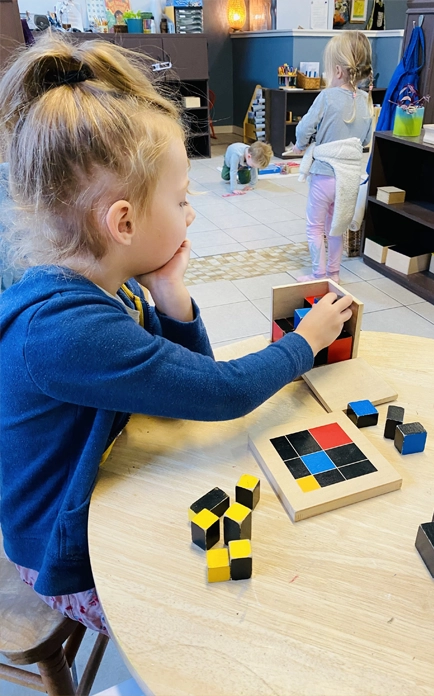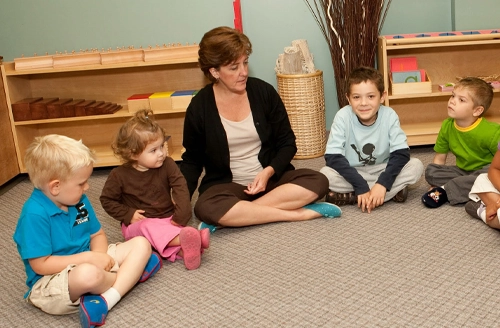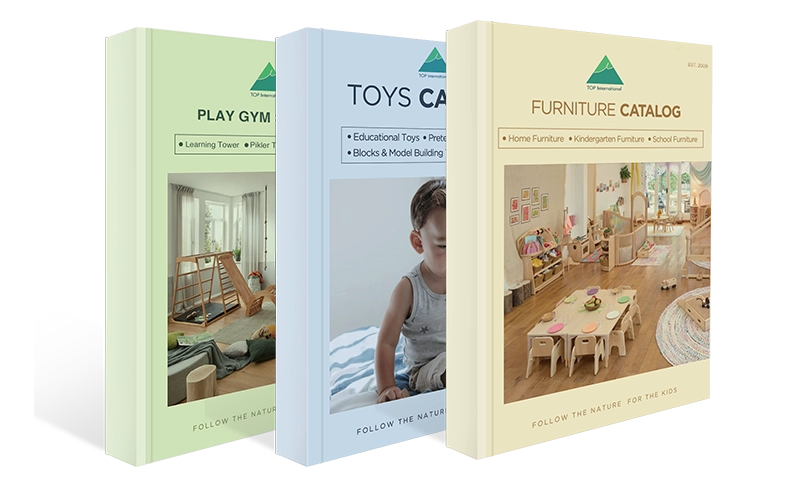Are you trying to design a nursery classroom layout that adheres to educational standards, kindles creativity, and fosters active learning? Do you often ponder the impact of spatial arrangement, furniture selection, and the overall classroom environment on kids’ curiosity, engagement, and educational journey? It’s evident that creating an optimal nursery classroom layout is not just about visual appeal but involves an intricate balance of functionality, safety, and stimulation.
In navigating the complexities of early childhood education, the setup of a nursery classroom layout emerges as a fundamental element in nurturing a conducive learning atmosphere. The suitable classroom layout transcends mere aesthetics, offering a foundation that promotes exploration, interaction, and independence among children. Through a blend of educational research and practical insights, this article delves into 9 pivotal principles for crafting a nursery classroom that meets and elevates early learning standards.
Embarking on this exploration, we recognize the significance of a thoughtfully designed space that not only accommodates the diverse needs of children but also empowers educators to deliver more effective, engaging, and enjoyable teaching experiences. Let’s unravel the secrets to achieving a nursery classroom layout that genuinely resonates with the essence of early childhood education, making every square foot count towards the developmental milestones of our little ones.
The Importance of Nursery Classroom Layout
A well-designed classroom is the foundation of effective learning, impacting every child’s educational journey. Here are the crucial points that underline the significance of nursery classroom layout:
- Enhances Learning Efficiency: The layout directly influences how effectively children absorb and engage with new information. An organized space that logically flows can significantly reduce distractions and support focused learning.
- Promotes Safety: Safety is paramount in any nursery setting. A thoughtfully designed classroom minimizes risks and hazards, ensuring children have a secure environment to explore and learn.
- Adapts to Diverse Learning Styles: A flexible classroom layout accommodates various learning styles and needs, ensuring that all children can benefit from the educational experiences. This includes spaces for active play, quiet time, and hands-on learning.
- Fosters Independence and Confidence: By organizing materials and resources within easy reach of children, the layout promotes autonomy and self-directed learning, essential for building confidence and self-esteem.
- Reflects Educational Philosophies: The layout can embody the principles of specific educational approaches, such as Montessori or Reggio Emilia, reinforcing the curriculum’s goals through the physical environment.
- Facilitates Teacher Observation and Interaction: A well-planned layout allows teachers to observe and interact with children more effectively, ensuring that individual needs are met and fostering a solid teacher-student relationship.
- Encourages Creativity and Exploration: An engaging and stimulating environment, rich with varied materials and displays, can spark curiosity and imagination, critical drivers of learning in early childhood.
By focusing on these critical points, the design of a nursery classroom layout can move beyond basic functionality to become a dynamic space that nurtures and enriches the developmental journey of every child. The layout becomes not just a backdrop but an active participant in learning, tailored to foster growth, curiosity, and a love for learning from the earliest stages.

Principles for Creating Effective Nursery Classroom Layout
Creating a practical nursery classroom layout is pivotal in fostering an environment where children can excel academically and personally. These principles serve as the blueprint for designing spaces holistically supporting early childhood development. They emphasize not just the physical arrangement of the classroom but also how the environment can influence learning outcomes and personal growth. Here’s a concise overview focusing on unique principles:
1. Embracing Natural Light for Atmosphere Enhancement
The Power of Sunlight
Natural light does more than illuminate; it breathes life into the nursery classroom, creating a space that’s warm, inviting, and conducive to learning. Studies show that sunlight exposure boosts mood and energy, essential for kids’ engagement and well-being.
Design Strategies for Maximizing Light
Incorporate large, unobstructed windows and consider the classroom’s orientation to capture the most daylight. Use light, reflective colors for walls and floors to enhance the natural light’s reach within the space.

2. Creating a Welcoming and Inclusive Environment
A nurturing nursery classroom welcomes every child with open arms, promoting inclusivity and a sense of belonging. Achieve this by:
- Decorating with culturally diverse and inclusive materials.
- Designing spaces that are accessible and comfortable for all children, including those with special needs.
- Ensuring every child sees themselves represented in the classroom’s visuals and resources.

3. Embracing Flexibility in Nursery Classroom Layout
In the vibrant world of early childhood education, the layout of a nursery classroom plays a crucial role in facilitating an adaptive learning environment. Flexibility within these spaces is essential, catering to the spontaneous and varied nature of young children’s activities and learning styles. This adaptability is achieved through:
- Modular Furniture Use: The cornerstone of a flexible classroom, modular furniture, can be easily rearranged to suit different learning scenarios, group sizes, and activities. This furniture’s key characteristic is its lightweight design, allowing educators to modify the classroom setup swiftly and with minimal effort.
- Multipurpose Design Areas: Spaces crafted with versatility ensure that a single area can transition smoothly from a storytelling corner to a science lab. The hallmark of these areas is their ability to support a wide range of activities without requiring time-consuming setup changes.

4. Prioritizing Comfort in the Learning Environment
Comfort in a nursery classroom extends beyond the physical ease of seating options. It encompasses creating an environment where children feel secure, supported, and ready to engage. This comfort is cultivated through the following:

Child-Sized Seating Options: Furniture tailored to kids’ size promotes physical comfort and enhances their sense of independence and belonging. These seating options are characterized by ergonomic designs that support proper posture and enable children to focus and engage with activities for extended periods without discomfort.
Designing for Multiple Uses: Ensuring that every element within the classroom serves more than a single purpose maximizes space and contributes to a sense of well-being among children. They thrive in environments that are not cluttered and chaotic but are instead organized and predictable. Comfort here is defined by the ease children can navigate and utilize the space.

5. Designing Age-Appropriate Learning Areas
Creating an enriching environment tailored to the developmental stages of children is crucial in early childhood education. Each learning zone should be carefully designed to encourage exploration, independence, and growth.
For 18-Month-Olds to 2-Year-Olds

Napping Area: A quiet, cozy corner with mats or small cots allows for the essential rest toddlers need. Soft lighting and gentle music can create a calming atmosphere conducive to sleep.
Sensory Play Zone: Equip this area with materials that stimulate the senses—textured balls, giant building blocks, and simple water play tables. Montessori-inspired activities, focusing on practical life skills and sensory exploration, are perfect for this age.


Active Play Space: A safe area with soft mats and ample room for movement encourages physical development. Include simple climbing structures and tunnels that cater to toddlers’ need to explore their physical capabilities.
For 3-Year-Olds to 4-Year-Olds
Arts and Crafts Center: A space with age-appropriate art supplies like large crayons, washable markers, and chunky paintbrushes allows creative expression. Low tables and chairs and easy-to-clean surfaces make this area inviting and practical.


Literacy Nook: Create a comfortable reading area with various picture books accessible at child height. Incorporate soft seating options like bean bags or cushions to encourage cozy reading sessions.
Nature and Science Exploration: Inspired by Reggio Emilia’s emphasis on discovery and inquiry, this zone could include natural materials for sorting, magnifying glasses, and simple plant-growing kits to spark curiosity about the natural world.

For 5-Year-Olds to 6-Year-Olds

Math and Logic Games Area: Offer materials that support early numeracy skills, such as counting beads, puzzle blocks, and simple board games that encourage logical thinking.
Writing and Language Lab: A station with lined paper, alphabet stamps, and various writing tools supports emerging literacy. Montessori Materials, such as moveable alphabets and sandpaper letters, enhance tactile learning experiences.


Dramatic Play Stage: A dedicated space for dress-up, puppet shows, and role-playing fosters imagination and social skills. This area can have costumes, a small stage, and a puppet theater to support narrative exploration.
6. Age-appropriate Furniture and Equipment for Children
Selecting the right furniture and equipment for a nursery classroom layout is crucial in creating a space that nurtures young minds. Meticulously chosen items significantly provide a safe, comfortable, and stimulating environment conducive to learning and growth. Here are the core considerations for a well-equipped nursery:
| Category | Key Features | Benefits | Ages |
|---|---|---|---|
| Tables & Chairs | Child-Proportionate | Enhances Focus | 2-6 |
| Soft Seating | Plush, Safe | Comfortable | All |
| Storage Units | Accessible, Labeled | Promotes Order | 2-6 |
| Sensory Tables | Adjustable Height | Stimulates Senses | 2-4 |
| Play Centers | Modular, Safe | Fosters Skills | 3-6 |





When crafting your nursery classroom layout, the goal is to select versatile and durable items that support the diverse needs of children at different developmental stages. A thoughtfully designed space with age-appropriate furnishings lays the groundwork for a rich educational journey and encourages kids to explore, discover, and thrive.
Remember, a well-planned nursery classroom layout, with carefully chosen furniture and equipment, is foundational to creating an enriching learning environment. It’s about more than just aesthetics; it’s about fostering a space where every child can grow and succeed.
7. Creating a Stimulating and Engaging Learning Environment
Creating a stimulating and engaging nursery classroom layout is essential in nurturing kids’ innate curiosity and developmental needs. Thoughtfully arranging furniture and play equipment that are safe, ergonomic, and interactive becomes a cornerstone in designing such an environment.

Musical Corners
Auditory corners in the nursery layout inspire exploration and discovery through sound.
Enhances language, memory, concentration, and emotional expression, creating a dynamic learning space.

Sensory Experience
Introducing tactile tables, art areas, and musical corners diversifies sensory stimulation.
Boosts cognitive growth, sensory skills, and creativity, enriching educational experiences.
This intentional design encourages children to engage deeply with their surroundings, promoting active learning and growth. A well-conceived nursery classroom layout, rich with opportunities for sensory exploration and interactive play, sets the stage for a vibrant educational journey, inspiring young minds to explore, discover, and thrive.
8. Organizing Materials and Resources for Easy Access
Organizing materials and resources for easy access is crucial in designing a nursery classroom layout that fosters learning and independence. Strategic placement of shelves, cubbies, and storage units at heights accessible to little ones enables children to interact with their environment confidently and independently. This approach cultivates a sense of responsibility and self-reliance among kids and maintains an orderly and functional classroom.
Employing straightforward, visually engaging labels guides children effortlessly to the resources they need, reinforcing their ability to navigate the space easily. Such meticulous organization underscores the significance of a child-centered nursery classroom layout, promoting an atmosphere where curiosity and creativity are encouraged, and every educational resource is within reach, ensuring a seamless and enriching learning experience for each child.

9. Safe and Accessible Learning Environment
Ensuring a safe and accessible learning environment is a cornerstone of a practical nursery classroom layout. By incorporating furniture with rounded edges, using non-toxic materials, and designing clear, unobstructed pathways, educators can create a space that safeguards the well-being of every child. Accessibility is further enhanced by arranging the classroom to accommodate learners of all abilities, ensuring that each child can explore and participate without barriers. This deliberate focus on safety and inclusivity within the nursery layout protects children and fosters an atmosphere of trust and openness, which is crucial for nurturing young minds.

Involvement of Parents and Educators

Parent Involvement
Parents play a crucial role in the nursery classroom layout, offering insights that enhance learning. Their involvement, through feedback and participation in activities, directly influences the environment, making it more conducive to their child’s needs and interests.
Educator Involvement
Educators adjust the nursery classroom layout to foster learning and growth, tailoring spaces to meet the developmental stages of children. Their continuous evaluation and modification of the environment ensure it remains a dynamic and supportive educational setting.

Creating the best Nursery Classroom Layout for Kids
For kindergarten headmasters and teachers, creating the ideal nursery classroom layout involves designing a safe, engaging, and adaptable space to children’s evolving needs. The focus should be on creating a learning environment that encourages exploration and interactive learning, with furniture and resources that are age-appropriate and conducive to child development. Educators should aim for a layout that maximizes the use of space, promotes accessibility, and incorporates a variety of sensory experiences to cater to children’s diverse learning styles.
On the other hand, parents should consider how well a nursery’s layout aligns with their child’s learning needs when choosing a facility. They should look for classrooms that offer a safe, nurturing environment that clearly emphasizes educational and developmental goals. The presence of well-organized, child-friendly spaces and evidence of an engaging and adaptable curriculum are critical indicators of a nursery that values the holistic development of its students. Parents should seek out nurseries where the layout and design reflect a thoughtful approach to early childhood education, ensuring their child will be in a setting that promotes growth and learning.







